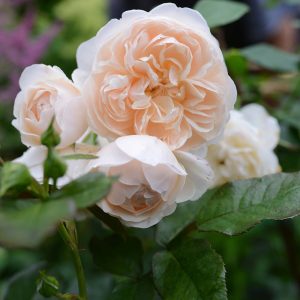Description
Meet Agapanthus ‘Pitchoune Blue’ – a charming and delicate herbaceous perennial that will add a touch of blue and serenity to any garden. This compact plant boasts beautiful, trumpet-shaped flowers that are a soft blue hue, which creates a tranquil and calming atmosphere in any outdoor space. ‘Pitchoune Blue’ is a low-maintenance and easy-to-care-for plant, making it an excellent choice for gardeners of all levels. It thrives in full sun to partial shade and prefers well-drained soil, and once established, it’s drought tolerant, which means you won’t have to water it too often. For a harmonious look, pair ‘Pitchoune Blue’ with other blue-flowering plants like Salvia and Nepeta. Alternatively, you can create a contrasting look by pairing it with plants that have pink or yellow flowers, such as Echinacea or Coreopsis. Overall, Agapanthus ‘Pitchoune Blue’ is a delightful and charming plant that will add a touch of tranquility and beauty to any garden.
Key Facts
- Common Name(s):Lily of the Nile, African lily ‘Pitchoune Blue’
- Hardiness:Fully hardy
- How big will I get? Agapanthus ‘Pitchoune Blue’ can grow to a height of 0.4m and a spread of 0.4m.
- Did You Know That:The long, strappy leaves of Agapanthus were traditionally used in Zulu culture to make twine and rope?
Plant Calendar
A rough guide to how this plant will change through the year.
| Jan | Feb | Mar | Apr | May | June | July | Aug | Sept | Oct | Nov | Dec | |
| Flowering Time |   |
  |
  |
|||||||||
| Foliage Colour |  |
 |
 |
 |
 |
 |
 |
 |
 |
 |
 |
 |
| J | F | M | A | M | J | J | A | S | O | N | D |
  |
  |
  |
|||||||||
 |
 |
 |
 |
 |
 |
 |
 |
 |
 |
 |
 |
Care Guide

Soil Requirements
Agapanthus ‘Pitchoune Blue’ prefers soil with good drainage and does not tolerate standing water. This plant can grow in soil with a wide range of pH levels, it is not picky about the pH level of the soil.

Best Position
Agapanthus ‘Pitchoune Blue’ prefers a sheltered position and requires full sun to thrive, this consists of more than six hours of direct sunshine per day.

Maintenance
Agapanthus ‘Pitchoune Blue’ should be cut back to the ground in Autumn, as the foliage starts to go brown.

Pest, Diseases and Wildlife
Agapanthus ‘Pitchoune Blue’ can have problems with slugs and snails, and it tends not to have problems with diseases. It is also known to attract bees and other pollinators. It is toxic to cats, dogs and people.





